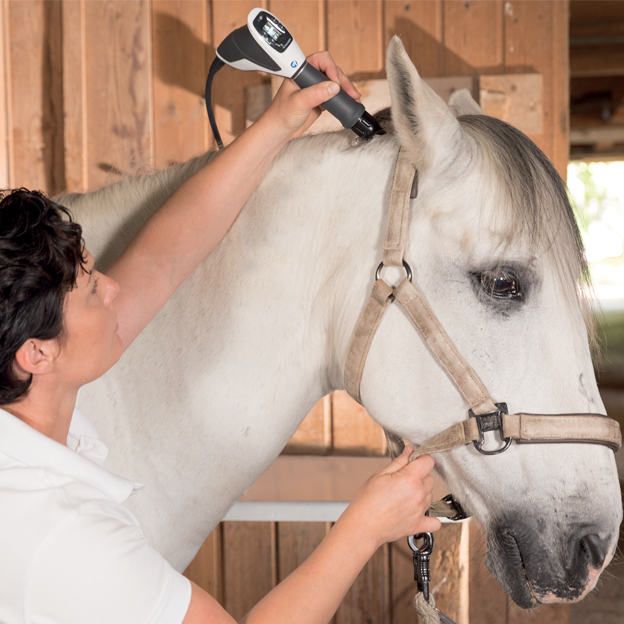Discover the Remarkable Advantages of Equine Therapy for Psychological Recovery
Discover the Remarkable Advantages of Equine Therapy for Psychological Recovery
Blog Article
Assessing the Effectiveness of Laser Treatment in Equine Therapy for Injury Recovery
The assessment of laser therapy's effectiveness in equine injury recovery pivots on numerous variables, including healing time, pain mitigation, and tissue regrowth. Vets frequently observe superior results with laser treatment compared to conventional methods, positioning it as a crucial aspect in equine treatment.
Comprehending Laser Treatment
Laser treatment has actually become a pivotal device in veterinary medicine, especially in the therapy of equine problems. Known for its non-invasive nature and effectiveness, laser therapy entails the application of details wavelengths of light to promote cells fixing and minimize swelling. This restorative modality is significantly preferred for its ability to speed up the recovery procedure in steeds experiencing a variety of bone and joint injuries and persistent conditions.
The main system behind laser treatment is its capacity to enhance mobile functions. Furthermore, laser treatment advertises vasodilation, enhancing blood flow and oxygen delivery to broken cells, hence accelerating healing.
In equine medicine, laser therapy is especially valuable for problems such as tendonitis, osteoarthritis, and wound healing. The technique is lauded for its pain-relieving homes, enabling horses to restore mobility and feature a lot more swiftly. Vets additionally appreciate its very little side results compared to various other treatment modalities, making it a trustworthy and safe option for equine treatment.

Just How Laser Therapy Functions

Upon absorption, these photons activate a collection of biochemical adjustments, enhancing mitochondrial function and bring about increased adenosine triphosphate (ATP) production. This increase in ATP increases mobile metabolism, advertising tissue repair work and regeneration. Furthermore, laser treatment regulates inflammatory feedbacks by influencing cytokine degrees and reducing oxidative tension, thus alleviating discomfort and swelling.
One more significant aspect of laser treatment is its duty in improving microcirculation. The treatment advertises vasodilation, boosting blood circulation and oxygen distribution to broken cells (Equine Therapy). This helps with the elimination of mobile debris and sustains the spreading of fibroblasts and collagen synthesis, critical for injury recovery
Scientific Evidence
The effectiveness of laser therapy in equine treatment has actually been confirmed with numerous medical studies, showcasing its healing potential across a range of conditions. Numerous regulated trials and observational studies have recorded considerable improvements in cells repair, pain reduction, and general recovery timelines. As an example, a research study conducted by Turner et al. (2012) showed that horses treated with low-level laser treatment (LLLT) for ligament injuries exhibited increased recovery compared to those obtaining conventional therapies. The research study highlighted a significant reduction in inflammation and improved collagen development.
In a similar way, research by Johnson and associates (2015) focused on equine muscular tissue injuries, exposing that laser treatment substantially accelerated muscle mass fiber regeneration and lowered muscular tissue tightness. Professional evaluations have shown that laser therapy can reduce chronic problems discover this such as osteo arthritis.
Veterinarian Insights

Veterinarians likewise value the flexibility of laser treatment. It can be used for a vast array of problems, from superficial wounds to much deeper bone and joint injuries. Dr. Emily Brown highlights its energy in treating conditions like tendonitis and osteo arthritis, where conventional therapies commonly fall brief. She mentions that laser therapy can be customized to the particular needs of each horse, making sure optimal end results.
Moreover, veterinarians value the capacity to integrate laser therapy with various other treatment techniques. This multimodal method can boost total therapy efficacy, providing an extensive option for equine rehabilitation. Such endorsements from see this website experienced specialists emphasize the expanding acceptance and application of laser therapy in equine medicine.
Practical Considerations
A crucial aspect of applying laser therapy in equine therapy involves understanding the functional considerations that guarantee its effectiveness and safety and security. Primarily, it is crucial to pick the suitable laser tool, as different kinds vary in wavelength, power, and penetration deepness. Equine Therapy. Veterinarians should be well-versed in these specifications to customize treatment protocols effectively to each injury kind
In addition, the regularity and period of laser therapy sessions require careful preparation to maximize restorative benefits while minimizing any type of prospective unfavorable results. Constant monitoring of the horse's response to therapy can lead necessary modifications in the therapy routine. Establishing a secure and controlled setting throughout therapies is additionally vital to stop unintended direct exposure to laser exhausts, which can hurt both the steed and discover this the handler.
Training and accreditation of employees administering laser treatment are extremely important to guarantee appropriate method and to maintain safety standards. Additionally, maintaining accurate documents of each session, including laser setups and observed outcomes, is essential for examining the total performance of the treatment and for making data-driven choices.
Final Thought
Laser treatment has become a reliable method in equine injury recovery, offering substantial benefits in healing time, discomfort relief, and tissue healing. Scientific studies highlight substantial improvements in problems such as tendonitis and osteoarthritis, credited to improved mobile feature and increased ATP manufacturing. Vet monitorings affirm these findings, highlighting premium end results compared to standard therapies. For optimal outcomes, continual surveillance and individualized treatment procedures remain necessary in leveraging the complete capacity of laser therapy in equine care.
Report this page